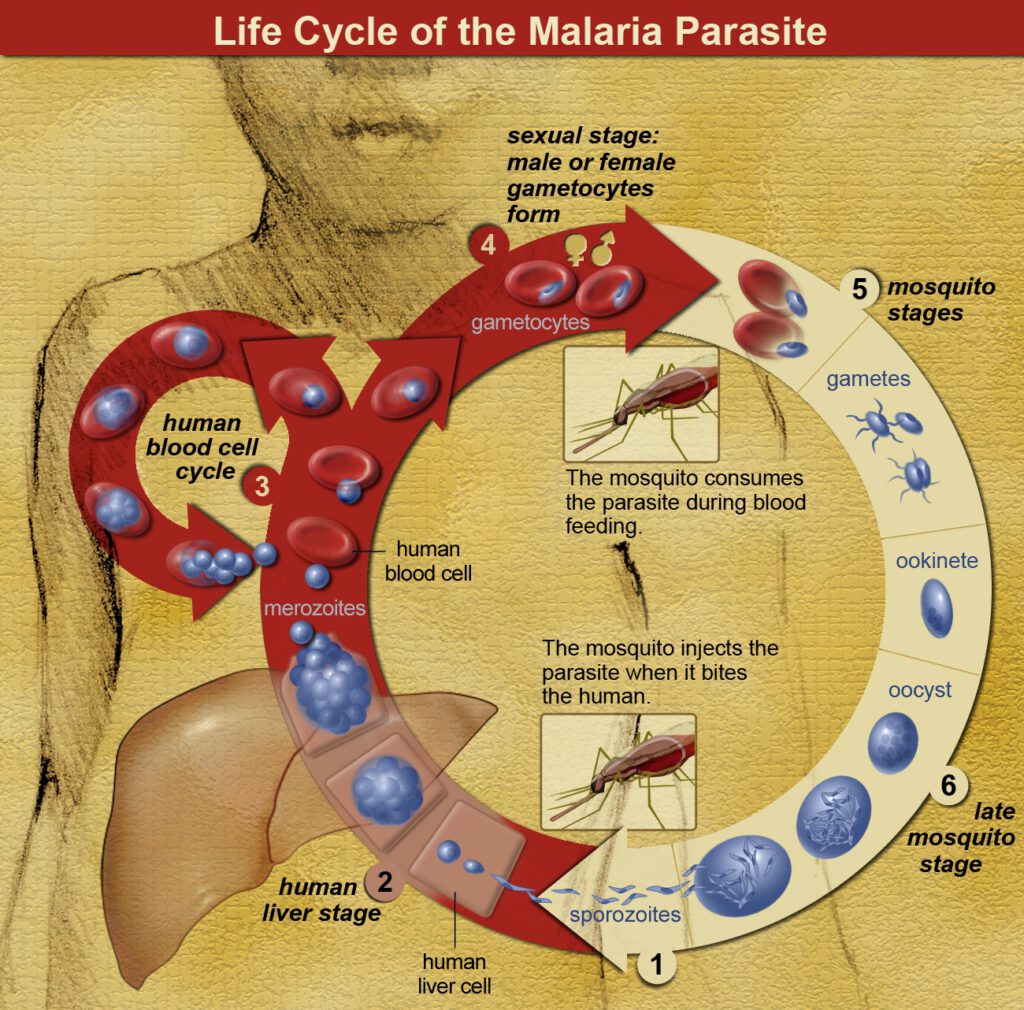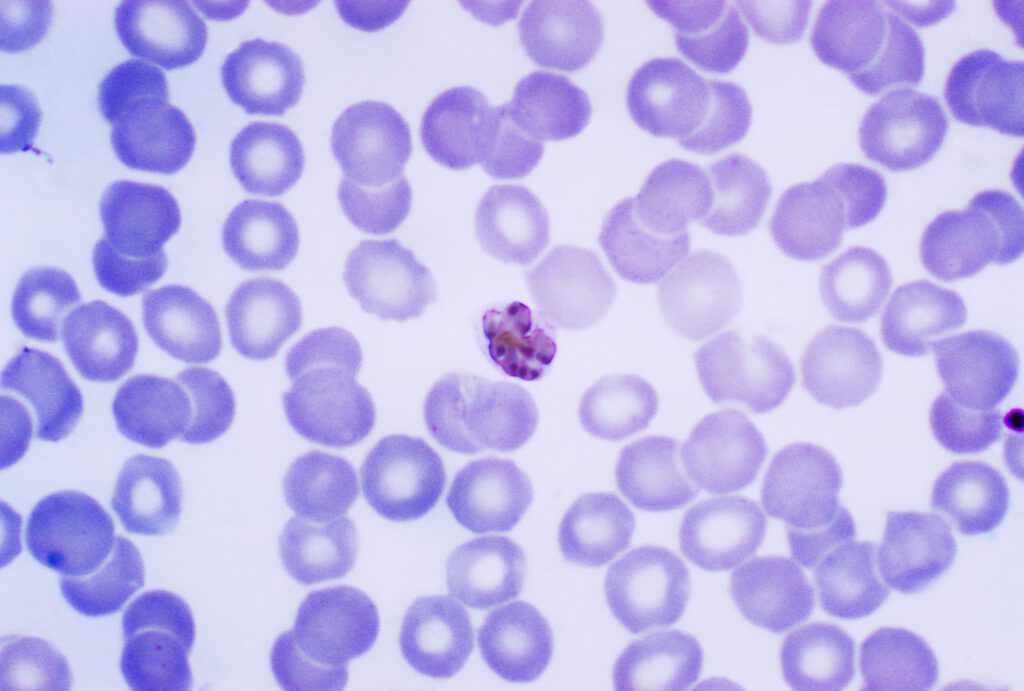The disease
Malaria is a disease. It is caused by parasites, which are are transmitted through infected mosquitoes. Even though malaria is life-threatening, it is a preventable and curable disease. The world health organisation estimates that in 2018 more than 200 Million patients were infected and 400 000 died. Two out of three victims are children under the age of 5 years.
Currently half of the world population is at risk. Climate change will likely allow the disease transmitting mosquitoes to spread further. More people will become malaria patients in the future.
Life cycle of the malaria parasite
Once a human is infected through a mosquitoe, the malaria sporozoites infect human liver and blood cells to reproduce. A more detailed view on the life cycle can be found here.
Diagnosis
There are three widespread ways to diagnose a malaria infection. Most effective and most expensive are laboratory antigen tests against blood samples of suspected cases. The most common method is the microscopic examination of stained blood films, where infected blood cells are visually distinct from normal blood cells. In health systems which cannot afford the above only a history of fever is used as evidence for an infection.
Saving humans from malaria
Like any other disease, winning against malaria requires action and results in many different areas. We need to spread scientific knowledge and educate people about malaria. Measures to impede the dissemination of infected mosquitoes are required. Research for preventive vaccinations and curative medication need to deliver success. Also automatized screening technologies are needed to find infected patients and treat them effectively, without overburdening health systems.
References
| World Health Organization: Malaria fact sheet |
| Wikipedia: Malaria |
| Post: Minimic - An automatized malaria screening microscope |

